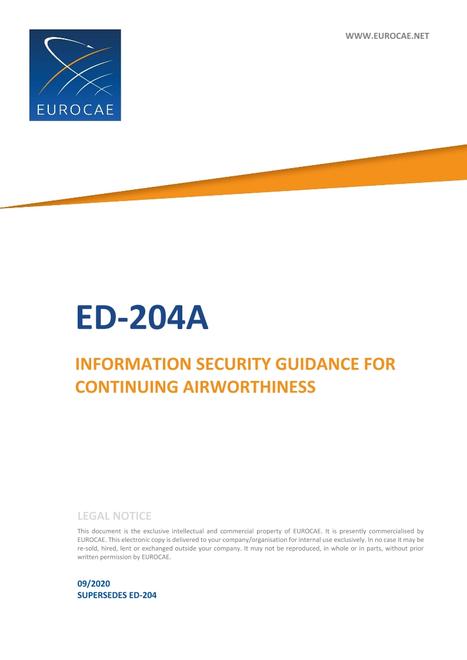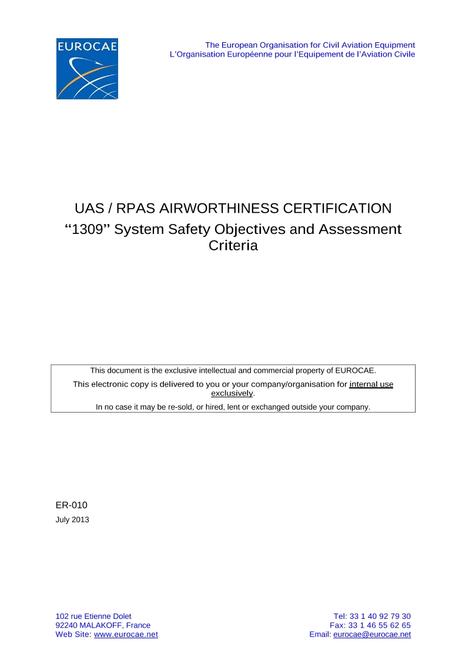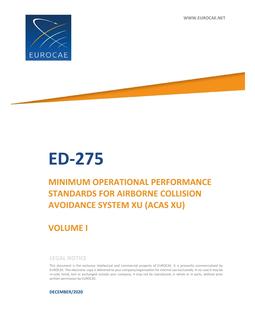-
-
Available Formats
- Availability
- Priced From ( in USD )
-
Available Formats
-
- Immediate download
- $179.00
- Add to Cart
-
- Printed Edition
- Ships in 1-2 business days
- $179.00
- Add to Cart
Customers Who Bought This Also Bought
-

EUROCAE ED-94C
Priced From $273.00 -

EUROCAE ED-204A
Priced From $204.00 -

EUROCAE ER-010
Priced From $25.00 -

EUROCAE ED‐275
Priced From $1,080.00
About This Item
Full Description
PURPOSE AND SCOPE
Introduction
Movement of patients with highly infectious diseases between hospitals in air ambulance aircraft is a technical, logistical and medical challenge with significant risks for the safety of the patient, the crew, and the public.
The safety of such transports, specifically starting 2020 during the COVID-19 pandemic, became an area of growing interest and concern (1) and has prompted calls for standardized guidelines in the past (2). In response to previous Public Health Emergencies of International Concern, mostly hemorrhagic fevers such as Ebola and Lassa, a multitude of transport solutions have been developed, many of those with the military or government/public health agencies involved (3–9). In addition, the consensus guidelines of the European Network of Infectious Diseases (EUNID) offer some guidance on the transport of patients with highly contagious diseases in their Framework for the design and operation of high level isolation units (10), although only less than half of all centers treating patients with highly contagious diseases do have specific transport systems in place and all of those are ground ambulance based (11).
In 2019, Gibbs et al. conducted a comprehensive review of the literature on High-Level Containment Aeromedical Transport, mostly in large military transport airframes, such as Boeing C-17 or Lockheed C-130 (12). In this excellent paper, the authors perform a detailed analysis of the published operational aspects and protocols on highly infectious disease transports published mainly in the wake the of the Ebola outbreak, with a focus on many important pre- and post-transport aspects that go beyond the scope of this paper, such as training/drills, regulations and legal limitation, communication plans, liquid and solid waste handling, death in-flight, decontamination, equipment reuse, waste disposal and personnel monitoring, amongst others.
However, at least in our experience, the majority of patient transfers during the COVID-19 pandemic are carried out by private air ambulance providers, rather than military and government bodies, and the focus shifting from open or semi-open transport systems more towards closed PMIU based solutions for most of these transports (3, 13–15). This requires guiding information for private air ambulance providers to establish solid and accepted best practices that are suitable for a different working environment (small to medium sized air ambulance planes vs. large aircraft of governmental and military providers) and also provide maximum safety for patients and crews.
Assumptions and Limitations
A Highly Infectious Disease (HID) by definition of the European Network of Infectious Diseases (EUNID) is understood as an infection that is transmissible from person to person; is life threatening; presents a serious hazard in the health-care setting and the community; and requires specific control measures (e. g, high-level isolation) (10).
With the increasing awareness of public health threats during the past two decades (emergence of severe acute respiratory syndrome (SARS) in 2002, highly pathogenic avian influenza A (H5N1) virus in 2006, middle east respiratory syndrome (MERS) in 2012, the Ebola outbreak between 2014-2016, and the latest corona virus pandemic (SARS-CoV-2) in 2019) the definition was more and more understood in the context of Ebola and SARS-CoV-2 (12).
Assuming that future emergence of other HIDs of unknown severity and geographical spread can be expected, this guidance document is intended to cover a broader spectrum of infectious diseases, notably those that can be managed in small or medium sized aircrafts as provided by private carriers mostly as single patient transport.
It is not intended to describe all possible infectious diseases and measures for a safe air transport, especially not mass transports which are reserved to governmental and military institutions.
Although there has been identified a lack of nonorganizational standards and specialisation in the field of aeromedical evacuation of patients with contagious diseases and in the peer reviewed literature, this document aims to build up guidance based on recommendations of published material from International and National Health and Safety Organisations, from accepted best practice in medicine and from experiences of providers in this field.





